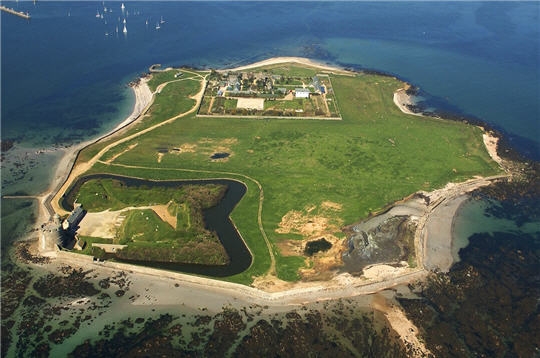Abstracts of plenary talks
Francesco Amoroso (Université de Caen)
titre : Intersections anomales et systèmes polynomiaux de polynômes lacunaires (creux)résumé : Dans cet exposé, on fera le lien entre une conjecture centrale en géométrie diophantienne, la conjecture de Zilber-Pink, et certaines questions d'effectivité dans la résolution de systèmes d'équations algébriques "lacunaires", qui remontent aux travaux fondateurs de Andrzej Schinzel.
Carlos D'Andrea (Universitat de Barcelona)
title: Equidistribution of algebraic pointsabstract: This talk will report on recent and ongoing work with André Galligo, Marta Narvaez and Martin Sombra. The study of the distribution in the complex space of the solutions of systems of polynomial equations with respect to some measures associated to the input is an active area of research. In the presentation, we will focus on zero-dimensional varieties in complex space, and also on orbits of algebraic points. We will show how these two cases can be dealt by means of projections and reconstructions "à la Fourier".
Laurent Busé (INRIA Sophia Antipolis - Méditerranée)
title: Discriminants of homogeneous polynomialsabstract: The discriminant of a collection of polynomials gives information about the nature of the common roots of these polynomials. In this talk, its definition and its formalism will be discussed in two cases : discriminants of zero-dimensional schemes and discriminants of hypersurfaces. More precisely, we will show that defining the discriminant by means of the theory of resultants provides two important advantages: First, one can extend its geometric properties to a large class of coefficient rings, typically domains, which can be interest in the field of number theory. Second, we will show that it is possible to deduce many formal properties and computational rules, which can be of interest in the field of computer algebra. This talk report on a joint work with Jean-Pierre Jouanolou (University of Strasbourg).
Pierrette Cassou-Nogues (IMB, Bordeaux)
titre : Arbres de Newton pour les idéaux en dimension deux et calcul des invariants.résumé : Dans cet exposé, nous construisons l'arbre de Newton d'un idéal en dimension deux à l'aide des polygones de Newton successifs et calculons les invariants de l'idéal à partir de cet arbre. Il s'agit d'un travail commun avec W.Weys.
Wouter Castryck (KU Leuven)
title: Linear pencils encoded in the Newton polygonabstract: Consider the curve C defined by a sufficiently generic Laurent polynomial f(x,y) that is supported on a given lattice polygon D. In this talk we study "combinatorial pencils" on C, by which we mean linear pencils that are induced by a map C --> P^1 of the form (x,y) -> x^a y^b, where a and b are coprime integers. We will show how to read off the degree, the being complete or not, the scrollar invariants, ... of a combinatorial pencil purely in terms of the combinatorics of D. Our main result is that, apart from some well-understood exceptional instances of D, every pencil computing the gonality is combinatorial. This is joint work with Filip Cools; it builds on previous work by Ryo Kawaguchi.
Bruno Grenet (LIX, Palaiseau)
titre : Complexité de la résolution des systèmes polynomiauxrésumé : La résolution des systèmes polynomiaux est un problème central en calcul formel, ayant de nombreuses applications. Dans mon exposé, je ferai un survol des principaux résultats et questions ouvertes autour de ce problème du point de vue de la théorie de la complexité.
title: On the complexity of polynomial system solving
abstract: Polynomial system solving is a major problem in computer algebra, with numerous applications. In my talk, I will give an overview of the main results and open questions around this problem from a complexity-theoretic point of view.
Grégoire Lecerf (LIX, Palaiseau)
title: How evaluation speeds up polynomial eliminationabstract: It is classical that symbolic algorithms for polynomial elimination based on sparse or dense representations suffer from very high complexities in worst case situations. In order to improve complexity bounds, alternative symbolic techniques introduce probabilistic aspects and make use of functional representations for polynomials in the spirit of numerical analysis. We will present known algorithms in this research area, and will discuss their mathematical and algorithmic foundations. Practical performances will also be presented on the basis of our implementations within the Mathemagix computer algebra system. Part of this talk will concern recent unifying results, obtained in collaboration with Bank, Giusti, Heintz, Matera, and Solernó.
Patrice Philippon (IMJ, Paris)
titre : Géométrie arithmétique des variétés toriques II (partie I donnée par M. Sombra).résumé : Il existe un dictionnaire entre les propriétés algebro-géométriques des variétés toriques et les propriétés combinatoires des éventails et polytopes. Nous développons dans une série de travaux ce dictionnaire en direction de la théorie d'Arakelov des variétés toriques et de l'analyse convexe. Dans ces exposés, nous introduirons les éléments de cette théorie, que nous illustrerons sur plusieurs exemples.
Josef Schicho (RICAM, Linz)
title: Transcendental Functions in Mechanical Linkagesabstract: The configuration set of a mechanical linkage, consisting of various links connected by hinges that permit rotational or translational motions, can often be described by a system of algebraic equations. Exceptions are linkages with helical joints, also known as screws, which allow helical motions that are not algebraic subgroups of the algebraic group of Euclidean motions (only analytic subgroups). The study of these linkages leads to systems of polynomial and exponential (in the complex case) equations. In this talk (joint result with H. Ahmadinezhad and Z. Li), we study overconstrained linkages with helical joints, i.e. linkages where the dimension of the configuration space is bigger than expected by the "naive" Grubler-Kutzbach-formula. We show that the excess of dimension can always be explained algebraically. The main ingredience is a theorem on the transcendence degree of fields with exponential functions by Ax.
David Sevilla (University of Extremadura)
title: Radical parametrization of curves and surfaces by adjointsabstract: I will present a generalization of the adjoints method of parametrizing rational curves, extending it to low-genus curves, and to surfaces under certain assumptions.
Martín Sombra (ICREA and Universitat de Barcelona)
titre : Géométrie arithmétique des variétés toriques I (partie II donnée par P. Philippon).résumé : Il existe un dictionnaire entre les propriétés algebro-géométriques des variétés toriques et les propriétés combinatoires des éventails et polytopes. Nous développons dans une série de travaux ce dictionnaire en direction de la théorie d'Arakelov des variétés toriques et de l'analyse convexe. Dans ces exposés, nous introduirons les éléments de cette théorie, que nous illustrerons sur plusieurs exemples.
Wim Veys (KU Leuven)
title: Power moments of kloosterman sumsabstract: In joint work with K. Gong and D. Wan we give an essential treatment for estimating arbitrary integral power moments of Kloosterman sums over the residue class ring. In particular, for prime-power moduli we prove concrete formulas using the computation of certain Igusa zeta functions, involving resolution of singularities.
Abstracts of short talks
Alin Bostan (INRIA Saclay)
title: Fast algorithms for the p-curvature of the differential operatorsabstract: The p-curvature of a differential operator in characteristic p is a matrix that measures to what extent the solution space of the operator has dimension close to its order. The p-curvature is a useful tool in concrete applications to combinatorics and statistical physics, where it serves for instance as an a posteriori certification filter for differential operators obtained by guessing techniques from power series expansions. We discuss theoretical and algorithmic questions related to the p-curvature. We show that for equations of arbitrary order, the p-curvature can be computed in subquadratic time O(p^1.79), and that this can be improved to O(log(p)) for first order equations and to O(p) for large classes of second order equations. We also address the problem of the efficient computation of the characteristic polynomial of the p-curvature. We describe a recent algorithm for computing the characteristic polynomial in time O(p^0.5). The new algorithm allows to test the nilpotency of the p-curvature for primes p of order 10^6, for which the p-curvature itself is impossible to compute using current algorithms. Joint work with Xavier Caruso and Eric Schost.
André Galligo (Université de Nice Sophia-Antipolis)
CancelledRobin Guilbot (IMPA, Rio de Janeiro)
titre : Une approche torique de la conjecture C1résumé : Les corps quasi algébriquement clos, ou corps C1, sont définis par une condition de petit degré : Le corps K est C1 si toute hypersurface de l'espace projectif Pn de degré d admet un point K-rationnel dès que d <= n.
Nous définirons dans cet exposé une notion de "petit degré torique" généralisant cette condition pour les hypersurfaces de variétés toriques projectives simpliciales déployées.
Nous utiliserons cette notion pour démontrer un cas particulier de la conjecture C1 de Kollár, Manin et Lang : toute variété lisse et séparablement rationnellement connexe plongée comme hypersurface d'une variété torique projective simpliciale et déployée, possède un petit degré torique et donc admet un point rationnel sur tout corps C1.
Pierre-Vincent Koseleff (Université Pierre et Marie Curie, Paris)
title: Quelques propriétés des polynômes d'Alexander-Conway des entrelacs à deux ponts.abstract: On voit le polynôme de Conway des entrelacs à deux ponts comme un polynôme continuant. Certaines propriétés des polynômes continuants permettent de retrouver très facilement les résultats classiques sur les polynômes d'Alexander des entrelacs à deux ponts. L'étude de leurs coefficients et du lieu de leurs racines permet d'améliorer certaines bornes, en particulier de répondre partiellement è la conjecture de Hoste sur le lieu des racines des polynômes d'Alexander des noeuds alternés. Travail commun avec Daniel Pecker (UPMC Sorbonne Université)
Niels Lubbes (King Abdullah University, Saudi Arabia)
title: Circles on surfaceskeywords: Families of circles, cyclides, Moebius geometry, elliptic geometry, weak Del Pezzo surfaces, translational surfaces
abstract: The sphere in 3-space has an infinite number of circles through any closed point. The torus has 4 circles through any closed point. Two of these circles are known as Villarceau circles. We define a 'celestial' to be a real surface with at least 2 real circles through a generic closed point. Equivalently, a celestial is a surface with at least 2 families of real circles.
In 1980 Blum conjectured that a real surface has either at most 6 families of circles or an infinite number. For compact surfaces this conjecture has been proven by Takeuchi in 1987 using topological methods. In 2001 Schicho classified complex surfaces with at least 2 families of conics. This result together with Moebius geometry led to a classification of celestials in 3-space.
In 2012 Pottmann et al. conjectured that a surface in 3-space with exactly 3 circles through a closed point is a Darboux Cyclide. We confirm this conjecture as a corollary from our classification (2013).
We recall that a translation is an isometry where every point moves with the same distance. In this talk we consider celestials in 3-space that are obtained from translating a circle along a circle, in either Euclidean or elliptic space. This is a natural extension of classical work by William Kingdon Clifford and Felix Klein on the Clifford torus.
Krasauskas, Pottmann and Skopenkov conjectured, that celestials in 3-space of Moebius degree 8 are Moebius equivalent to an Euclidean or Elliptic translational celestial. This conjecture is true if its Moebius model has a family of great circles. Moreover, its real singular locus consist of a great circle. As a corollary we obtain a classically flavored theorem in elliptic geometry: if we translate a line along a circle but not along a line then exactly 2 translated lines will coincide.
Adrien Poteaux (Université Lille 1)
title: Towards an effective and certified Abel-Jacobi theorem ?abstract: Given a Riemann surface of genus g, the Abel-Jacobi theorem defines an isomorphism between the set of degree 0 divisors quotiented by function divisors, and C^g quotiented by the periods. Thus, computing the Abel map enables to answer questions on divisors (useful in several computer algebra problems), but also to solve some specific differential equations problems in Physics. This talk will provide a brief overview on previous work on Abel map computation (mainly by van Hoeij, Deconinck and Patterson), and ideas on improvements, notably concerning the certification of the numerical computations (based on work coming from my PhD). It will not provide any final algorithm nonetheless.









